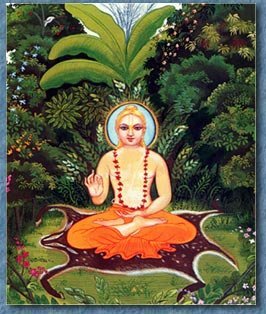Sunday, October 19, 2014
To move forward/backward through the talk, slide the gray bar that appears once audio is playing.
[/jbox]

Sri Krishna said, “Of all trees I am the banyan tree, and of the sages among the demigods I am Narada. Of the Gandharvas I am Citraratha, and among perfected beings I am the sage Kapila.” — Bhagavad Gita 10.26
Very little is known about the life of Maharishi Kapila.* He is believed to have lived in the Indian subcontinent, some say around 500 B.C.E.; other accounts give earlier dates. He is thought to have preceded Buddha by at least several generations.
*Though Kapila is regarded as the founder of the Sāňkhya (Samkhya) philosophical tradition, the classic texts that formalize Sāňkhya are dated much later. Isvaraksna’s Sāmkhya-karika was written in the middle of the fifth century C.E., and the work traditionally ascribed to Kapila himself, the Sāňkhya-sutra, cannot reliably be dated earlier than 1380-1450 C.E.
Note: Some text adapted from New World Encyclopedia